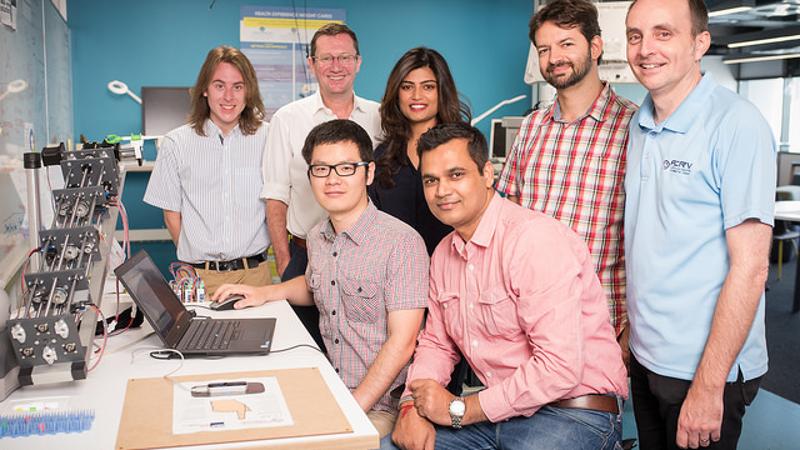
A team of QUT biologists, roboticists and surgeons are building robotic tools to help orthopaedic surgeons avoid unintended damage while performing knee arthroscopies. In this Conversation article, Dr Anjali Jaiprakash and Professors Jonathan Roberts and Ross Crawford explore the difficulties surrounding this common procedure and the willingness of surgeons to accept robotic help.
How good are humans at performing manual surgery?
Major surgical errors must be reported and there has been research into the attitudes of surgeons in how they report such errors.
But there is no requirement or legislation in place to report minor unintentional damage, and how that is even defined is a grey area. Very little research exists into the frequency of unintentional surgical damage, the challenges that cause this damage, or understanding of the long-term effects.
We are developing semi-autonomous robotic tools to help surgeons, especially for knee surgery. It’s estimated that around 4 million knee arthroscopies are performed each year worldwide.
In our recent study, some surgeons said they found that such knee procedures could be physically challenging and could cause unintentional damage to their patients.
But a majority said they would be prepared to use robotic tools if they could be shown to help in the surgery and reduce the risks of injury to patients.
Read the full Conversation article.
Media contacts:
Kate Haggman, QUT Media, 0400 548 013, kate.haggman@qut.edu.au
After hours Rose Trapnell, QUT Media team leader, 0407 585 901, media@qut.edu.au





